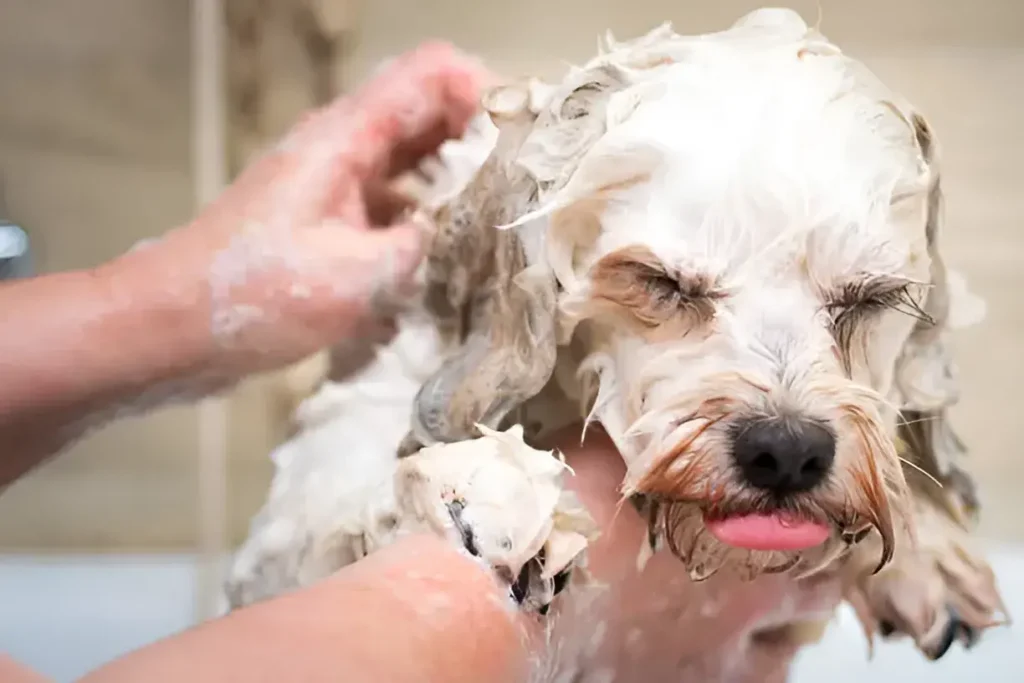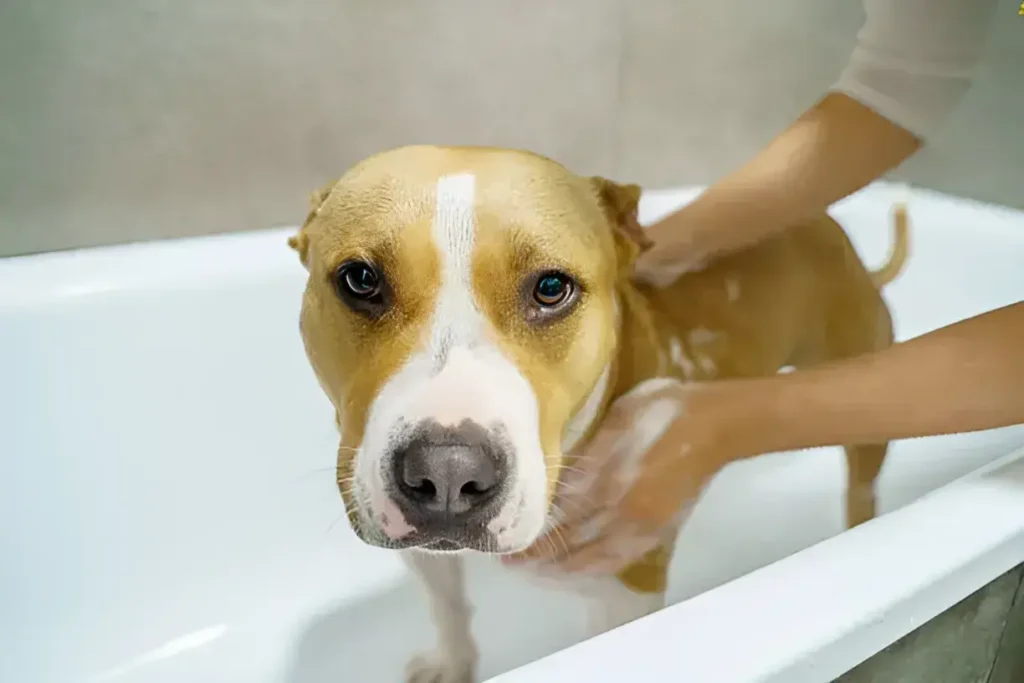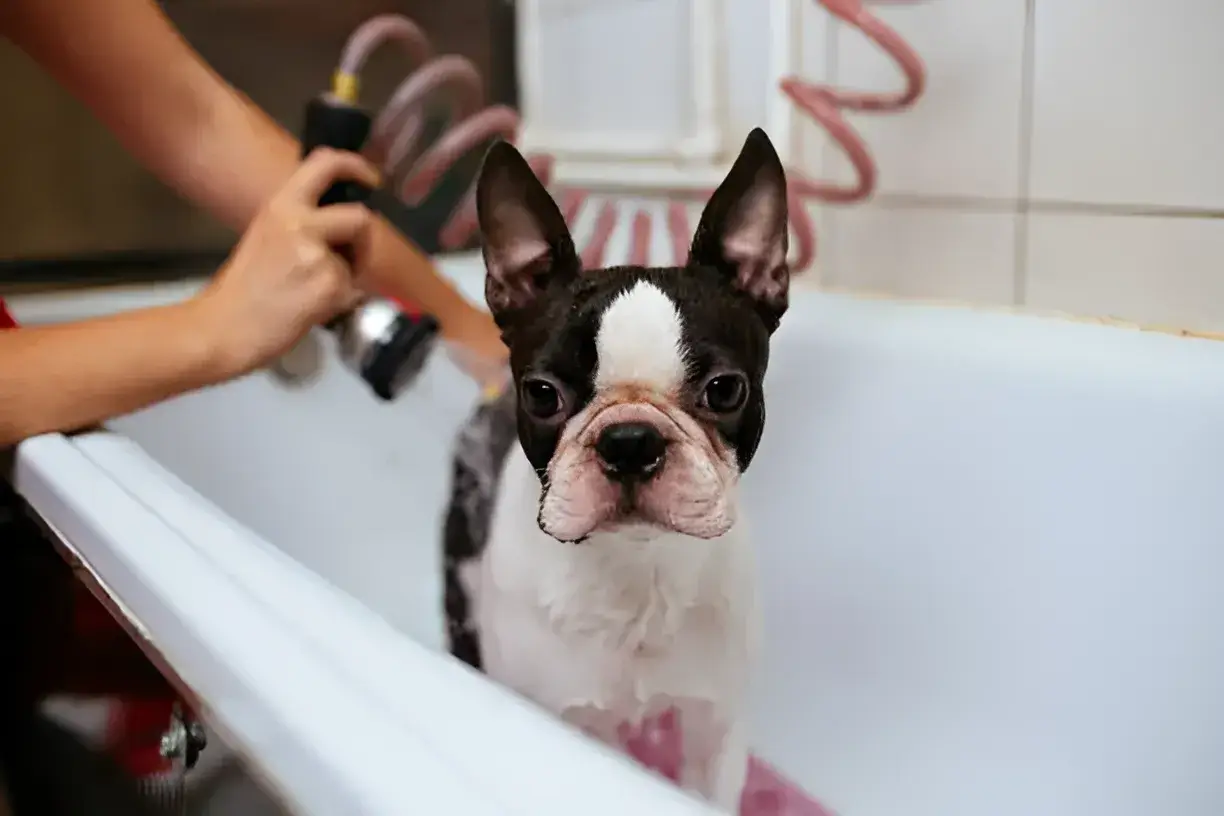Short answer: Most healthy short-haired dogs benefit from a bath every 1-3 months. However, this depends heavily on their individual needs, activity levels, and skin health.
Think of bathing your short-haired best friend like changing your own bedsheets. Sure, there’s a general timeframe, but if you work in a muddy field all day, you’ll probably want to wash them more often! The same goes for our furry companions.
Why Bathe Your Short-Haired Dog Anyway?
- Hygiene: Baths remove dirt, dander, allergens, and any of that wonderful “dog smell” they might pick up.
- Skin Health: Regular bathing helps manage natural oils, prevent odor buildup, and lets you spot skin problems early.
- Comfort: A clean pup is a happy pup! Baths can prevent itchiness and matting, especially for dogs with sensitive skin.
Factors That Change Your Dog’s Bathing Schedule
- Activity Level: Does your pup dig like a pro or prefer snoozing on the sofa? Busy dogs get dirtier faster!
- Skin Type: Some coats get oilier quicker than others, influencing bath needs.
- Breed: Boxers and Bulldogs may have different skin quirks than a sleek Whippet.
- Allergies: Your vet might recommend special bath routines to soothe itchy, sensitive skin.
- Age: Pups and older dogs often need baths adjusted to be extra gentle.
Signs Your Short-Haired Dog DEFINITELY Needs a Bath

- Visible dirt & debris: If they look like they played in a mud puddle, it’s bath time.
- Greasiness: An oily feel to their fur means a buildup of natural oils, time for freshening up!
- Odor: An overly strong “dog smell” is a good indicator.
- Excessive Dandruff: Flaky skin can be more than just dryness. A bath can help soothe and spot issues.
Bath Time Bliss: Tips for a Stress-Free Experience
- Positive Mindset: Approach with happy energy and treats, make it a fun bonding experience!
- Right Supplies: Dog-specific shampoo, towels, and non-slip surfaces are important.
- Water Matters: Lukewarm water, not too hot or cold, is best for their comfort.
- Avoid the Face: Focus on the body, gently cleaning around the face area with a damp cloth if necessary.
Bathing Trouble Spots: A Doggy Washday How-To
- Ideal Setup: Choose a non-slip space (bath, shower, outdoors if weather permits) with water at a comfortable depth.
- Wetting Down: Get them thoroughly wet before adding shampoo.
- Lather & Scrub: Work the shampoo into their fur, paying attention to paws, the tail area, and any skin folds.
- Thorough Rinsing: Make sure to remove ALL shampoo residue to prevent skin irritation.
Breed-Specific Bathing Notes
- Dachshunds: May need baths more often due to oily skin.
- Beagles: Pay attention to ears and folds, prone to buildup of dirt.
- Pugs & Bulldogs: Gently clean between wrinkles to prevent odor and infection.
- Greyhounds & Whippets: Very short fur may need less frequent baths.
Products Beyond Shampoo: When They Might Help

- Oatmeal shampoo: Soothing for itchy, irritated skin.
- Conditioner: For longer/double-coat short-haired breeds, helps detangle.
- Tear-free options: Ideal for puppies and sensitive dogs.
- Important: Always talk to your vet about product choices, especially if your dog has sensitive skin.
“My Dog Just Rolled in WHAT?” Mini-Guide
- Skunk: A mix of baking soda, hydrogen peroxide, and dish soap can help neutralize odor.
- Sticky or Oily Substances: A dab of vegetable oil can help before washing.
- Caution: If the substance is unknown, or the dog seems unwell, consult your vet FIRST.
Bathing as a Bonding Experience
- Playtime (if they’re into it): Toss in splash-proof toys to make bath time more fun.
- Praise & Rewards: Lots of positive energy and their fave treat turn baths into treats!
Beyond the Bath: Important Care Considerations
- Frequent Brushing: Helps distribute oils, removes loose hair, and can reduce bathing needs.
- Vet Visits: Regular checkups are essential to catch any underlying skin issues.
- Bathing Isn’t a Cure-All: Skin irritations or persistent odor may need the care of a veterinarian.
Conclusion
Bathing your short-haired dog is an act of love! A good bath schedule keeps them clean, comfortable, and healthy. Remember, it’s about more than just timeframes, considering their individual needs is the key to a happy, sweet-smelling pup.
The photo featured below the post headline is Credit: Group4 Studio/gettyimages
I hope you find this post helpful and informative. If Yes’ feel free to share it with your friends!
Frequently Asked Question
Can I bathe my dog too often?
Yes! Overbathing strips away healthy oils, leading to dry, irritated skin. Stick to the guidelines unless directed otherwise by your vet.
My dog HATES baths, what can I do?
Start slow! Positive reinforcement, short sessions with treats, and creating a calm environment are key.
Can I use wipes between baths to keep my short-haired dog fresh?
Absolutely! Hypoallergenic dog wipes are great for a quick clean-up but shouldn’t fully replace baths.
Is weekly bathing safe for my short-haired dog?
Unless your vet says otherwise, weekly is usually too often. It can mess up their natural skin oils.
How does grooming impact how often I bathe my short-haired dog?
Brushing regularly gets rid of loose fur and spreads skin oils, potentially meaning fewer baths!
How do you know when your dog needs a bath?
Trust your senses! Look for visible dirt, greasy fur, an overly strong “doggy” odor, or excessive dandruff. If you notice any of these, it’s bath time.
How much is too often to bathe a dog?
How often is too often to bathe a dog depends on the individual, but for most healthy short-haired dogs, more than once a week can strip natural oils. Start with a 1-3 month bathing schedule and adjust based on your dog’s activity level and skin health. If you notice signs like dry skin, itchiness, or excessive shedding after baths, you might be bathing too often.
How often should I bathe my dog in summer?
If your dog is getting more outdoor time during warmer months, they’ll likely need more frequent baths. Keep an eye on those “needs a bath” signs and be ready to bathe them more often than in cooler seasons.
How many times should a dog take a bath in a week?
For most healthy short-haired dogs, once a week is the absolute maximum they should be bathed, and even then only if absolutely necessary. More frequent bathing increases the risk of skin problems.
Is it okay to use my own shampoo on my short-haired dog?
Definitely not! Human shampoo can irritate their skin. Always use a dog-friendly formula.
Are there alternatives to full baths for my short-haired dog?
Yes! Doggy wipes are great for spot cleaning between baths. Regular brushing also helps keep their coat clean and healthy.
What if my short-haired dog has fleas?
A regular bath won’t get rid of fleas. Talk to your vet about a flea-specific shampoo or medication, and about how often to bathe your dog during a flea infestation.
Should I take my short-haired dog to a professional groomer?
While not strictly necessary, a professional groomer can help maintain your dog’s coat, especially if they have any specific breed needs or skin sensitivities.
My short-haired dog hates baths. What can I do?
It takes patience! Start with short sessions, lots of praise and treats, and use lukewarm water. If they remain extremely distressed, consult a groomer or trainer for specialized tips.
What are signs I’m bathing my dog too much?
Signs Your Dog May Be Over-Bathed
1. Dry, flaky skin or noticeable dandruff.
2. Itchiness, frequent scratching, or visible skin irritation.
3. Dull coat, excessive shedding, or an increased “doggy” odor.

